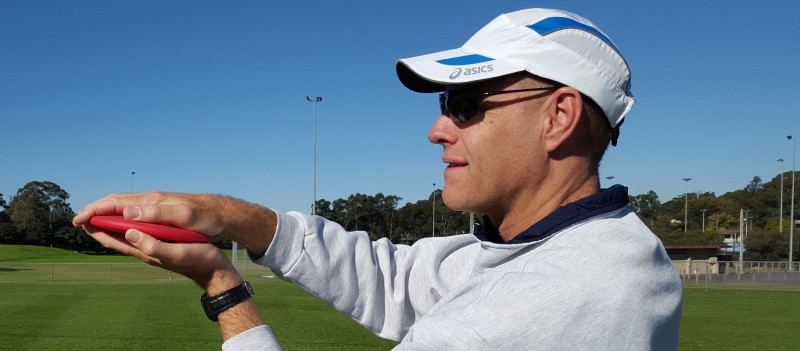3-Point Sprint Starts: What, Why & How?
What is a 3-point start?
A 3-point start is basically a crouch start performed with only one hand (and therefore “3 points” – one hand and two feet) in contact on the ground. The other hand is held up off the ground, and back behind and above the hip.
It is an excellent activity to use when transitioning young track & field athletes from a standing sprint start to a crouch start.
A 3-point start is generally not a starting technique that is allowed in competition. The IAAF “Rules of Competition” states that when an athlete is in the ‘On Your Marks’ position: “Both hands and at least one knee shall be in contact with the ground . . .” and at the ‘Set’ command the athlete shall retain this contact of their hands with the ground. It is, therefore, a starting technique primarily used in practice.
How does a 3-point start help young athletes?
It is the initial position of the hands that can assist the athlete. When in a full crouch start, with both hands on the ground, many beginners either don’t know what to do with their hands or can’t process which hand/arm drives forward and which one drives back. The arm position used in a 3-point start – one arm placed forward and one arm placed back – solves this for the athlete.
How to perform a 3-point start?
On a command (I simply use “ready”) the athlete takes up a position similar to a crouch start “set” position – but with only one hand in contact with the ground.
The feet are positioned as for a standing or full crouch start – one foot back and one foot forward, both pointing down the track. A comfortable gap is left between the front foot and starting line.
The hand that is opposite to the front foot is placed just behind the line. This hand forms an arch, with the fingers pointing outwards and the thumb inwards. (Watch for athletes who have the same hand and foot forward – a common mistake with young athletes who are performing a 3-point start for the first time.
The other arm is held up and back behind the the hip, ready to drive forward.
The front leg is bent at the knee at about 90 degrees, the back leg is bent at about 120 degrees. Avoid straightening the back leg when in this position – a straight leg cannot push.
The hips are held slightly higher that the shoulders. The head is down so that the athlete can see their back foot.
On “Go” the athlete pushes away from the starting line, imagining that all of their power is coming out of the top of their head. (The eyes will need to remain focused down for the first few strides to achieve this). The arm that is back behind the hip is driven forward, the hand that was on the ground is driven back in an opposite arm-to-leg action.
What are your thoughts about 3-point starts?
Further reading
Articles:
15 Simple Tips You Need to Know for a Standing Sprint Start
10 of the Biggest Mistakes Young Athletes Make When Using a Sprint Standing Start
Starting Blocks: How to Set Them Up In 3 Easy Steps
Tell Young Sprinters to “Start Your Engines”
Coaching Young Athletes E-Book:
A Fun Sprints Lesson Plan For Kids E-Book (Plus Bonus Cheat Sheet)
If this post helped you please take a moment to help others by sharing it on social media. If you want to learn more I encourage you to leave questions and comments or contact me directly.
Darren Wensor is a sports development professional, coach educator, specialist coach of young athletes, and founder of the blog coachingyoungathletes.com. Learn more about him here and connect with him on Twitter, Facebook, Linkedin, or via email. Check out Coaching Young Athletes on YouTube, the Coaching Young Athletes podcast, and the Coaching Young Athletes E-Book Series.


Good one Darren. Quoting more of the IAAF rules teaches us all too.
LikeLike
Thanks for that. A lot of people don’t realize that a 3-point start generally can’t be used in competition. I only found this out many years ago after I actually instructed one of my athletes to use it during a race!
LikeLike
[…] What Is A 3-Point Start & How Can It Help Young Athletes? […]
LikeLike
The 3-point start is an excellent alternative, where you much more naturally can start sprint running, compared to block start. The 3-point start is allowed in veteran (>35 years) competitions in Sweden. I would say that it is a safer start for slow and not so experienced starters (like myself).
LikeLike
Thanks for your comment. It certainly does allow a more natural starting action. It is great to hear that such a start is allowed in veteran competition in Sweden. I would love to hear if anyone else is aware of any other competitions that allow a 3-point start. I would like to see more youth athletics organisations allowing 3 point starts as it is a great way of starting for developing athletes. Darren
LikeLike